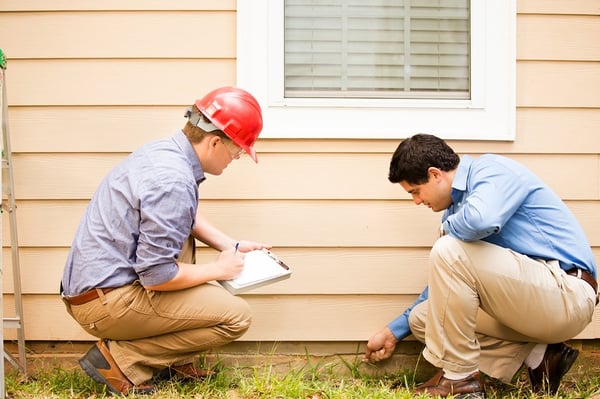The presence of radon in your home can be a serious health concern for you and your family.
In Ohio, two geological phenomena put most of the state in the highest risk category for radon.
One is sediment that was deposited by glaciers; the other is shale outcropping. Both are associated with high amounts of radon.
That puts many Ohio homes in danger of having too much radon.
To combat the elevated levels of radon, many new homes are built to resist radon with a passive radon system.
These systems can assist in lowering the radon in your home, but you can't assume that it will be enough to maintain safe radon levels.
Even though passive radon systems can reduce overall radon levels by 50%, it is still essential to have your home tested for elevated levels of radon.
Don't know much about radon? Read our blog post: "A Brief History of Radon."
In the article below, we will talk about radon and what radon-resistant new construction is.
Table of Contents
- What Is Radon?
- What Is Radon Resistant New Construction?
- How Effective Are Radon Resistant Systems?
- How To Increase The Effectiveness of Your Passive Radon System
- Get Your Home Tested
What Is Radon?
Radon is a naturally-occurring radioactive gas that is inert, colorless, and odorless. It occurs naturally in the atmosphere in trace amounts.
Outdoors, radon disperses quickly and is usually not a health issue.
Problems occur when radon gets trapped inside of schools, workplaces, and homes.
Radon enters buildings through cracks in the foundations and walls and then gets stuck inside.
When too much radon gets trapped inside, your radon levels elevate, making the home unsafe for the occupants.
Luckily, radon can be controlled and managed with proven, cost-effective techniques.
The primary health issue with radon is the risk of lung cancer.
Breathing in elevated levels of radon over extended periods will increase your chance of developing lung cancer.
Every year in the United States, 21,000 people die from radon-related lung cancer.
That is second to only smoking.
What Is Radon Resistant New Construction?
To put it simply, radon-resistant new construction is a passive radon mitigation system that is installed during the home's construction phase.
The installation of the passive radon system begins before the foundation is even poured.
Loose aggregate with perimeter drain pipe is laid in the foundation footprint.
This allows air and gas to flow easily below the foundation and get pulled through the discharge stack.
A vapor barrier is installed on top of the aggregate to restrict the flow of gas upward through any foundation cracks.
When the foundation is poured, PVC discharge piping is run through the center of the house from a stub in the foundation and up to the attic and vented above the roof.
Electrical access should be roughed into the attic near this vent pipe to allow for system activation if necessary.
Passive radon mitigation systems operate on a "chimney effect."
The air inside of the home is warmer than the air in the basement or below the foundation.
As the warmer air in the discharge pipe rises, it pulls air and radon gas from below the foundation out the vent in the roof.

How Effective Are Radon Resistant Systems?
A radon resistant system that is properly installed will reduce the radon in your home.
However, that doesn't necessarily mean they will reduce it to a safe, acceptable level.
The overall effectiveness of the system depends on the ability of the air to flow through the sub-foundation, the strength of the chimney effect, and the levels of radon that are underneath your home.
In a best-case scenario, your passive systems will reduce radon in your home by 50%.
50% will be more than enough if the levels of radon under your home are low.
However, if there is a lot of radon under your home leaking into your house, a 50% reduction may not be enough.
That's why it is still imperative to have your home periodically tested for radon.
How To Increase The Effectiveness of Your Passive Radon System
It's not uncommon for a radon-resistant home to need additional mitigation.
If the radon levels in your home test above 4.0 pCi/L, you should contact a certified radon mitigation contractor to talk about system activation.
Radon system activation involves installing a radon fan to the discharge stack in the attic.
The fan will dramatically increase the effectiveness of your system.
Get Your Home Tested
Many new homes in Ohio are built to be radon-resistant. However, the level of effectiveness can vary widely.
An adequately installed passive system can provide adequate mitigation, but they offer no guarantee that the radon levels in your home will be low enough.
The only way to know that is to have your home tested by a professional.
And, if necessary, your passive system can be activated to cycle more radon out of your home.
To have your home tested for radon today, contact Radon Eliminator.
They have years of experience testing homes in Ohio for radon and installing mitigations systems when it's necessary.
They will come to your home, test your radon levels, and then once they get the test results back, they will tell you what the next step is.
To get started with Radon Eliminator, click the button below.





